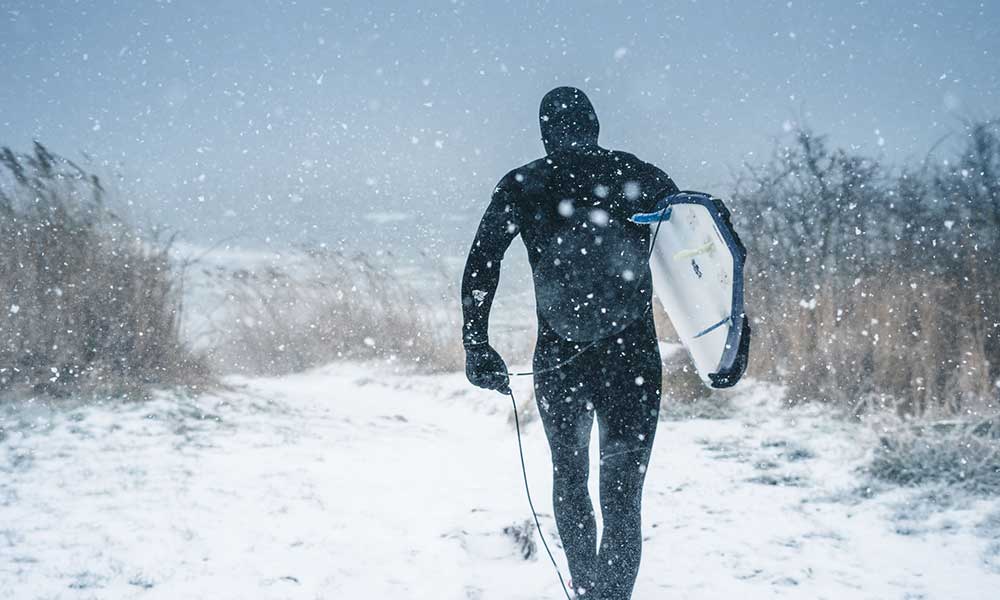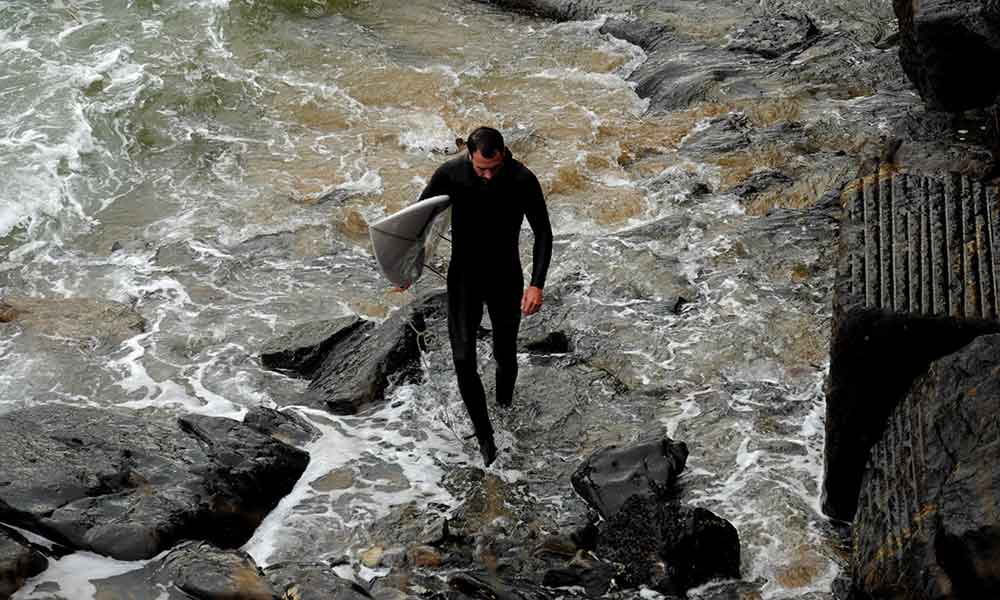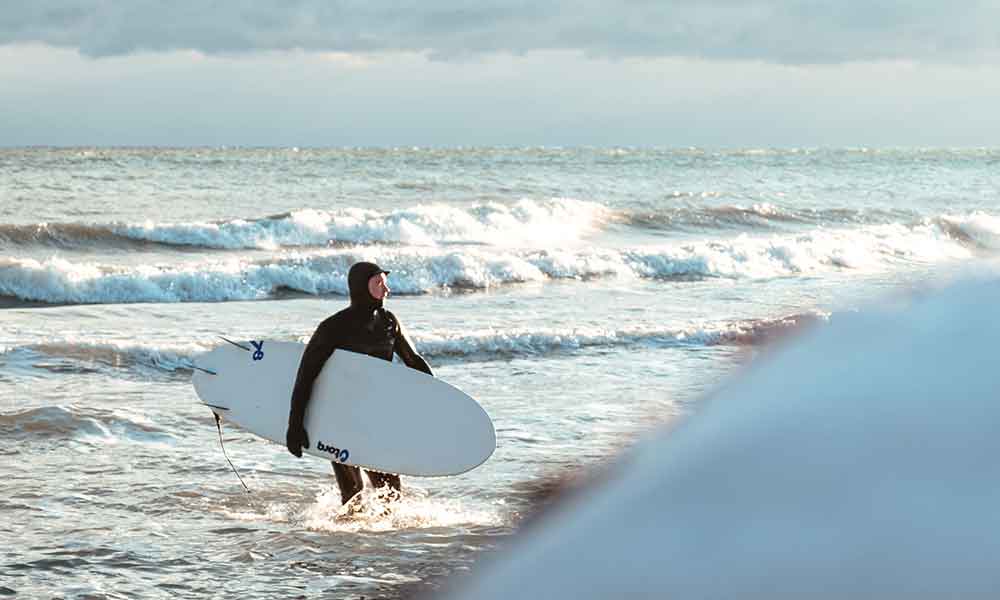Finding the right wetsuit isn’t just about picking an affordable suit that fits snugly.
You also need to think about the temperature, which is determined mainly by the wetsuit thickness.
The colder the temperature of the water, the warmer the wetsuit needs to be, and that’s not all, as you also have to factor wind temperature and cold sensitivity into the equation.
In this wetsuit temperature guide, we’ll consider a few facts to help you choose the right wetsuit.
General Wetsuit Temperature Guide
The following can be used as a basic wetsuit thickness guide.
It takes the temperature of the water into account and while there are other factors to consider (discussed below), this is ultimately the main consideration.
If nothing else, finding a wetsuit that matches the water temperature will ensure you don’t freeze during those extended surf sessions.
- Water Temperature = 40F; Ideal Wetsuit Thickness = 6/5/4 Sealed
- Water Temperature = 48F; Ideal Wetsuit Thickness = 5/4/3 Sealed
- Water Temperature = 52F; Ideal Wetsuit Thickness = 4/3 Sealed and Taped
- Water Temperature = 56F; Ideal Wetsuit Thickness = 4/3 Sealed
- Water Temperature = 60F; Ideal Wetsuit Thickness = 3/2 Sealed
- Water Temperature = 65F; Ideal Wetsuit Thickness = 4/3 Flatlock
- Water Temperature = 72F; Ideal Wetsuit Thickness = Spring Suit
- Water Temperature = 80F and Over; Probably Not Needed
Air and Wind Temperature
The air temperature is usually in sync with the water temperature, so you don’t need to worry too much about this.
However, that’s not always the case, and there are times when the water will feel relatively mild but the air will be cold.
The wind will also play a factor.
A strong and biting wind will make the temperature feel much colder than it is.
On a windy day, you may need a wetsuit with a higher neoprene thickness to protect your body from the freezing wind.
Your Tolerance
We all know those people who go shirtless during the winter months, whether they’re cheering on their local team and showing off their body paint, or just chilling (quite literally) on a windy beach.
On the flip side, there are those who will reach for their sweater/jacket even during the summer months and will always feel the cold much sooner than others.
If you’re in the former category, you may be better off with a thicker wetsuit.
If you spend the day shivering and constantly being distracted by how cold and uncomfortable you are, you won’t enjoy yourself.
It’s often said that women will feel the cold more than men, but while this might be true as an average, there are plenty of women who love the cold and plenty of men who hate it, so don’t use this as your barometer.
Benefits of Thicker vs Thinner Wetsuits
The benefits of a thicker wetsuit are obvious-they will provide an extra layer of protection and keep you warmer.
But there are benefits to reducing the thickness as well, including the fact that you won’t feel as “heavy” and may find it easy to move around on your board.
It’s a similar story when you add thickness to your board, even the smallest addition can make it feel much heavier and impact maneuverability.
Still, your health and comfort should come first, especially when you’re just a casual surfer looking to have some fun on the waves.
So, make sure you always choose a realistic thickness that will protect you against the elements.







